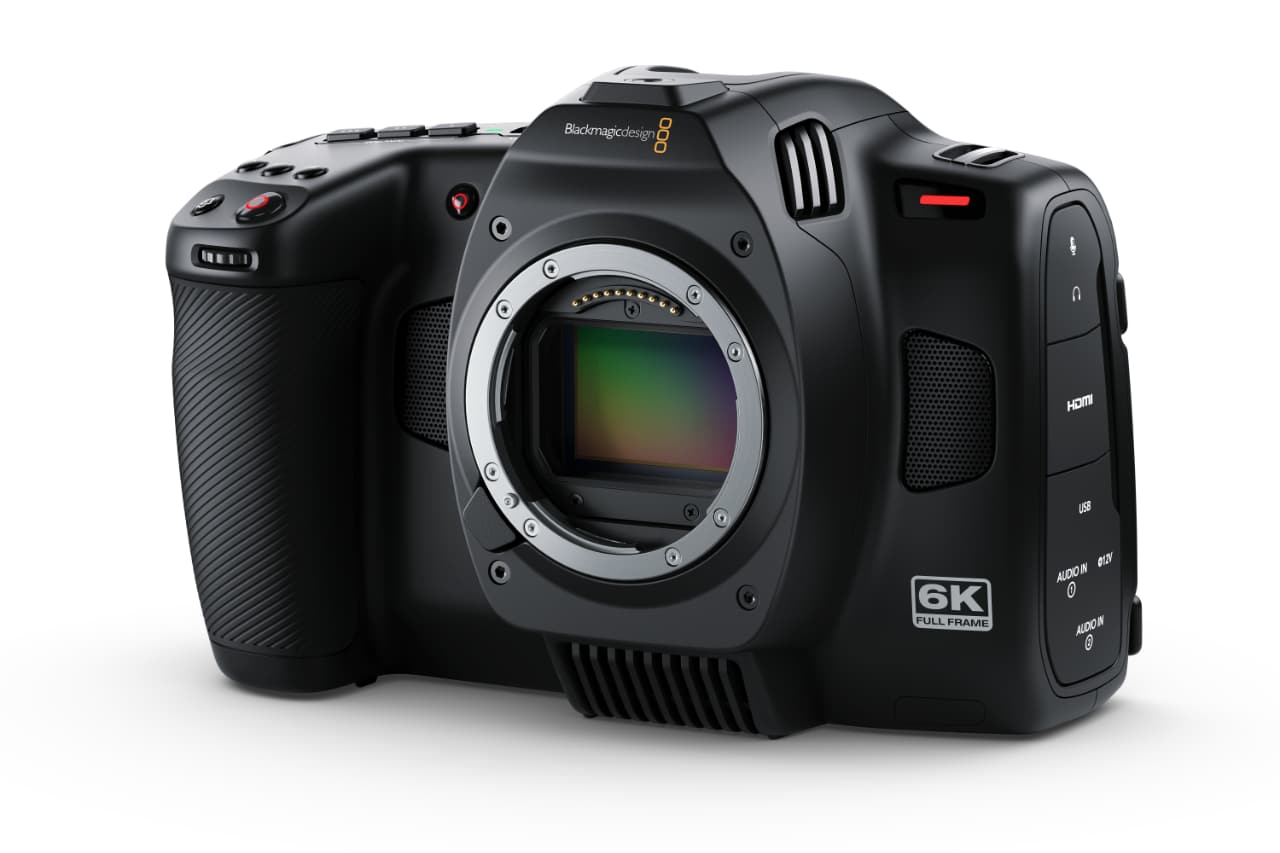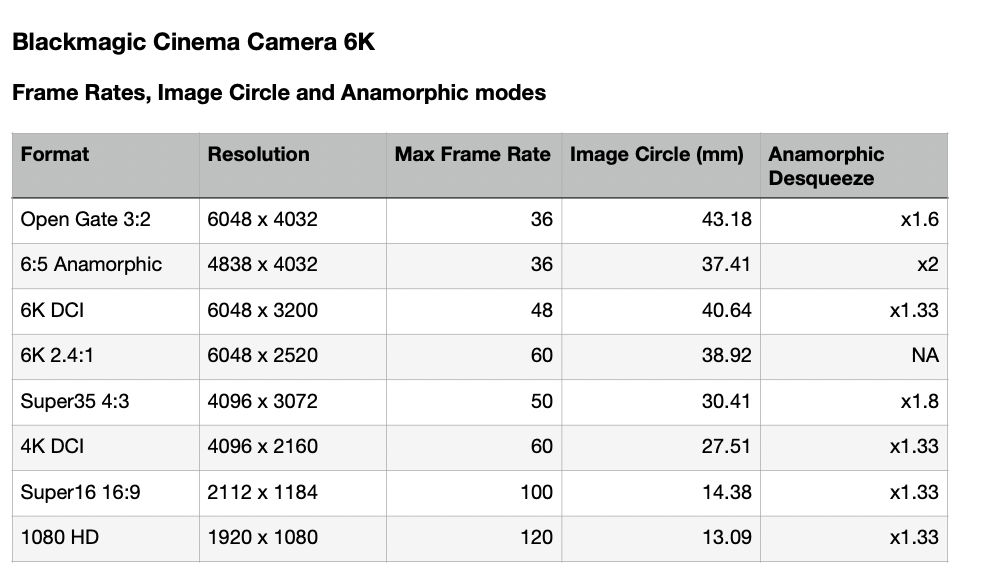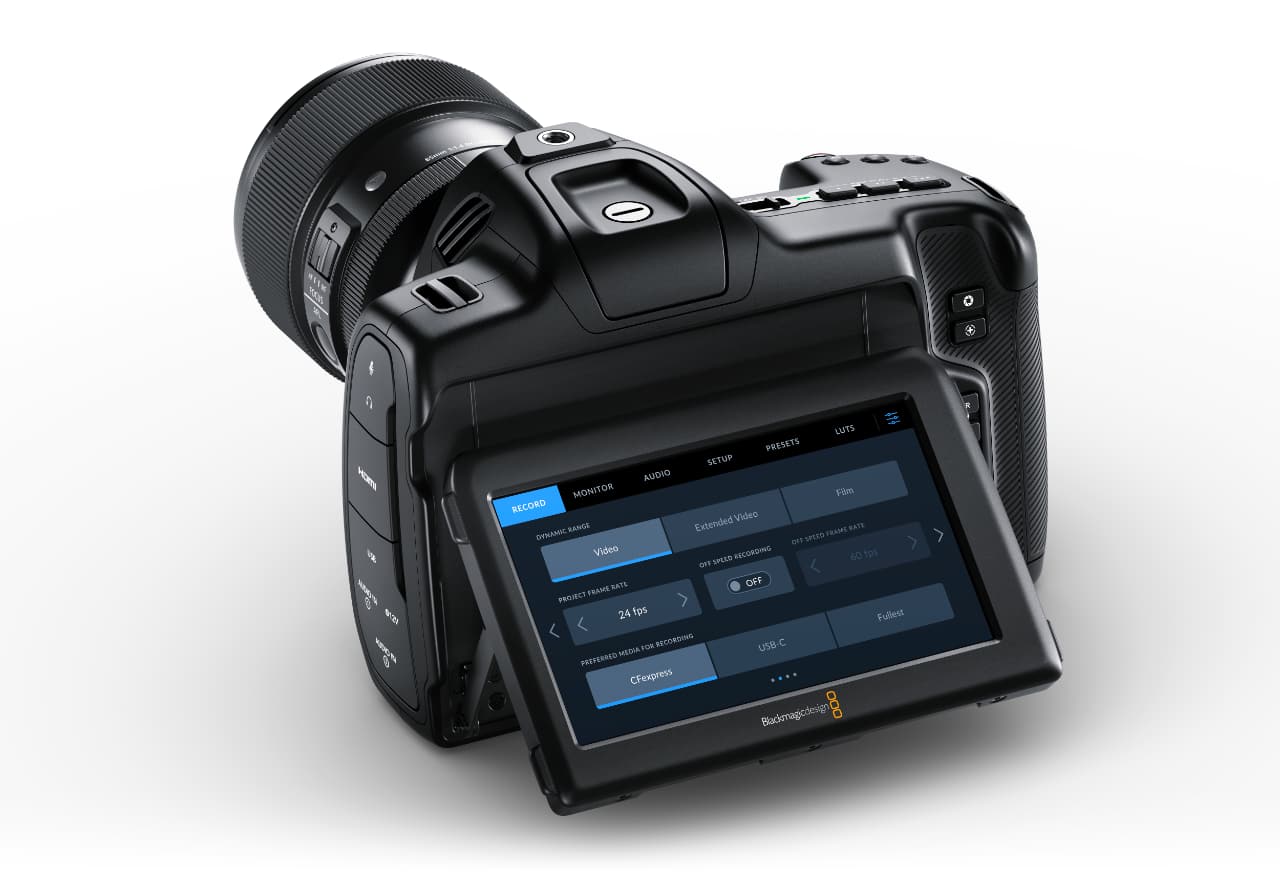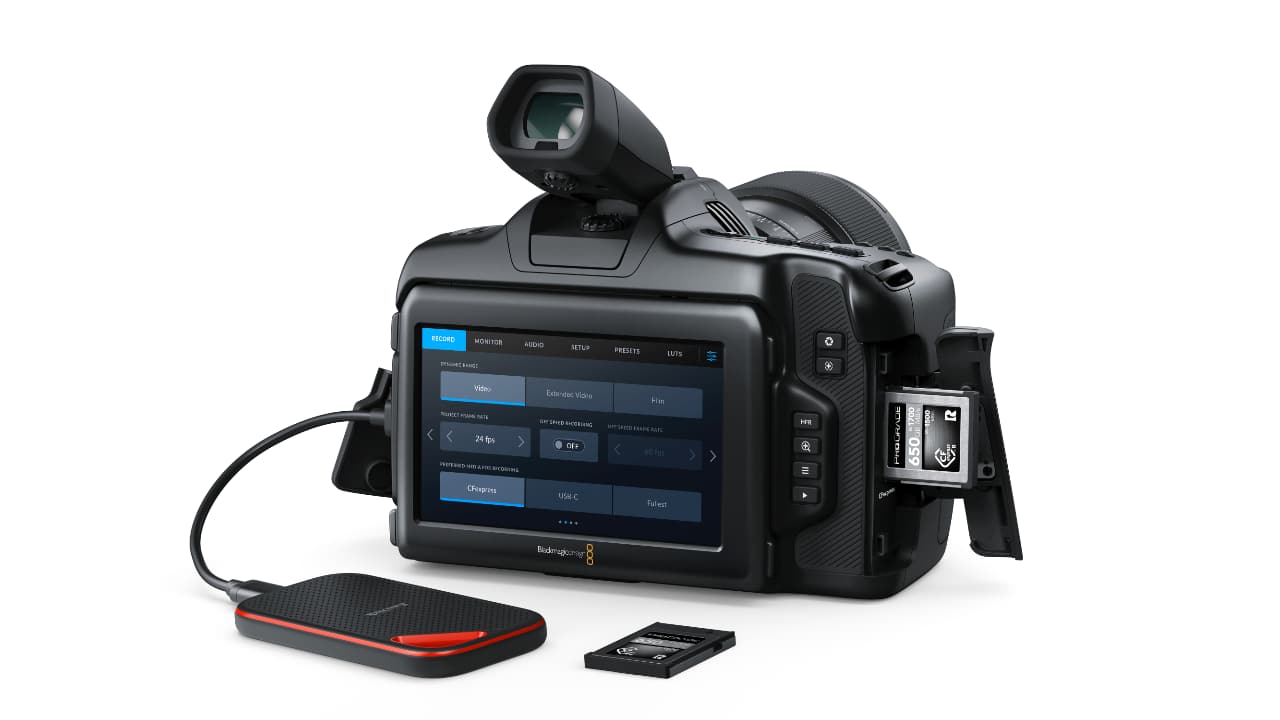
The new Blackmagic Cinema Camera 6K is the company’s first full-frame camera and one that it says “takes our camera systems into an entirely new direction.”
We know that pricing information usually comes towards the end of any breaking news story, but we’ll make an exception for the new Blackmagic Cinema Camera 6K. The company always likes to set the cat amongst the pigeons regarding what it can offer and the price it's willing to do it at. But, even so, the $2595 price point of the BCC6K is something else.
“We like to be both disruptive and accessible; those are the two key words,” said Craig Heffernan, technical sales director EMEA, when he walked us through the new camera’s key features last week.
He’s not joking.
“What we have here now is what we believe to be a very complete package that offers a full-frame, 6K, high-end camera solution for digital filmmakers,” he added. And from the spec sheet, it looks like the company has nailed that too.
There aren’t many of these units around just yet. Indeed, the only cameras in existence so far have just made their way from Melbourne to Amsterdam, where people can see them at IBC2023 on Stand 7.C49. The company aims to ramp production up quickly and hopes to have general availability next month. So, if you get your hands on one, this is what you can expect.
Blackmagic Cinema Camera 6K: key specs summary

Let’s start with a quick summary of the key specs:
• 36 x 24mm full frame 6K 6048 x 4032 sensor.
• Open gate 3:2, full height 6:5 anamorphic and Super 35 for creating cinematic content.
• L-Mount compatible with a wide range of still photography and cinema lenses.
• Records full resolution up to 36 fps or 120 fps windowed.
• Extremely fast CFexpress card recording.
• Adjustable, HDR 1500 nit LCD screen.
• Optional Blackmagic Pocket Cinema Camera Pro EVF.
• Larger NP-F570 battery, optional Blackmagic Pocket Camera Battery Pro Grip.
“What we have principally is a full-frame, L-Mount camera system; our sensor size is three by two, so it's 36 by 24 mil with an output resolution of 6048 x 4032,” said Heffernan. “What we also have there, which I think is really useful underneath those numbers, is that we get a pixel pitch of 5.94 microns. So, what that allows us to do within that resolution, within that larger open gate system as well, is get a very good photosite-based AF sensor that we can work with. This sensor is also going to be in line with our Pocket Camera sensors. And it's dual ISO, so it has the dual natives of 400 and 3200 ISOs.
“It inherits our Blackmagic colour science, it inherits all the developments we've had in the Pocket family and with the Ursa 12K camera systems over the year, and then we add sensor size, resolution, dual ISO, and 13 stops of dynamic range. I fully expect that we will have a camera here that will be a full-frame, low-light beast.
“Add all that together, and I’m very excited to see what this camera can do from an image point of view.”
It’s an intriguing prospect. Blackmagic Design is now part of the L-Mount Alliance, and the introduction of that alone enormously increases the creative potential of the camera, giving users access to the full range of Primes, Supers, and Anamorphics. Here’s a table from the company showing various Frame Rates, Image Circle, and Anamorphic modes.

“Open Gate? We know it's not a term that applies to digital, but it's a useful one to describe that we're using the full sensor height and width,” said Heffernan. “That means that you can make the choice as a content creator or filmmaker as to what you want to do with it. You can crop, you can scale, you can work in four by three — you can deliver four by three if you want to.”
Basically, the Blackmagic Cinema Camera 6K can shoot in all standard resolutions and frame rates from HD up to DCI 4K and even 6K. Customers can even shoot stills at 24.6 megapixels. Blackmagic Cinema Camera 6K will shoot up to 36 fps at 6048 x 4032 3:2 open gate or 60 fps at 6048 x 2520 2.4:1 and 60 fps at 4096 x 2160 4K DCI. For higher frame rates customers can window the sensor and shoot up to 100 fps at 2112 x 1184 Super 16. Customers can even work in true anamorphic 6:5 at much higher resolutions than other cameras using anamorphic lenses in 4.8K 24 fps at 4838 x 4032. Customers can even shoot 120 fps in 1080HD.
The trade-off? No ND filters
As you can see, Blackmagic has chosen to use the same form factor as the Pocket Cinema Camera family. “It's a known product, and it's something that we can build into and onto,” said Heffernan.
But while the BCC6K adds an Optical Low Pass Filter, which could see it become a popular choice in the LED volume space, it does mean that the designers have had to scrap the ND filters.
“The L-Mount itself is a slightly shallower flange focal distance…and unfortunately, that means we've had to remove the ND filters that we have on the 6k Pro,” said Heffernan. “We just physically can't fit the mechanical assembly in the camera between the sensor plane and the aperture. So we lose that, but we gain the Optical Low Pass Filter and the L-Mount, so its swings and roundabouts. I don't think that's a bad trade-off. We expect that if you're planning on using those, you might have preferred the screw-on filters, or you can go matte box and tray as well. So I think that's going to be perfectly fine.”
The same but different

But, while the BCC6K might look like one of the company’s Pocket cameras, it’s very definitely not.
“While the externals of the camera look the same, internally, it’s an entirely new architecture. It's a new design, so the guts of the camera are next generation,” explained Heffernan. “We are steering it as a Cinema Camera and not just in name, but clearly in the feature set and what it does. Where the Pocket Camera systems are fairly utilitarian, and we can use them, for instance, with our ATEM production tools, we don't have those principal tools built into this camera. So it won't work with the ATEM products; it doesn't have the kind of controls and the technical capability to work with those products currently.”
What it does have is the ability to work with every flavour of Blackmagic RAW, the same external control systems that exist for the Pocket family, and it does has a gyro, so if the camera positional data is something you need to pull out of the metadata in Resolve, you can do that easily. .
There is a large, bright 5 inch HDR touchscreen. On screen overlays show status and record parameters, histogram, focus peaking indicators, levels, frame guides and more. Customers can quickly apply 3D LUTs for monitoring shots with the desired color and look. The LCD monitor can even be tilted up to 180 degrees flat and down to 47 degrees so it's easy to monitor their shot from virtually any position. Plus, its HDR display features 1500 nits of brightness, so customers can always frame their shot, even in bright sunlight.
There is also a move to CFexpress.
“CFexpress allows us to use more robust digital media,” said Heffernan. “In a digital camera system, it's better for higher, faster, sustained data rates. It's principally more reliable to be on the nose about it. Cfast was designed for burst photography at best and then adapted to video, whereas CFexpress is more of a video-based media system. There’s also no SD slot, but it does have the USB-C, so you can use the usual external drives.”

And that, for the moment, is that. We have become used to Blackmagic lobbing curve balls at the industry over the past few years, but now and then, it still manages to pull something out of its hat once more that makes you sit up and take notice. And the Black Magic Cinema Camera 6K does just that.
Here's a link to some fairly impressive footage from beta testers.
Tags: Production Featured Cameras


Comments